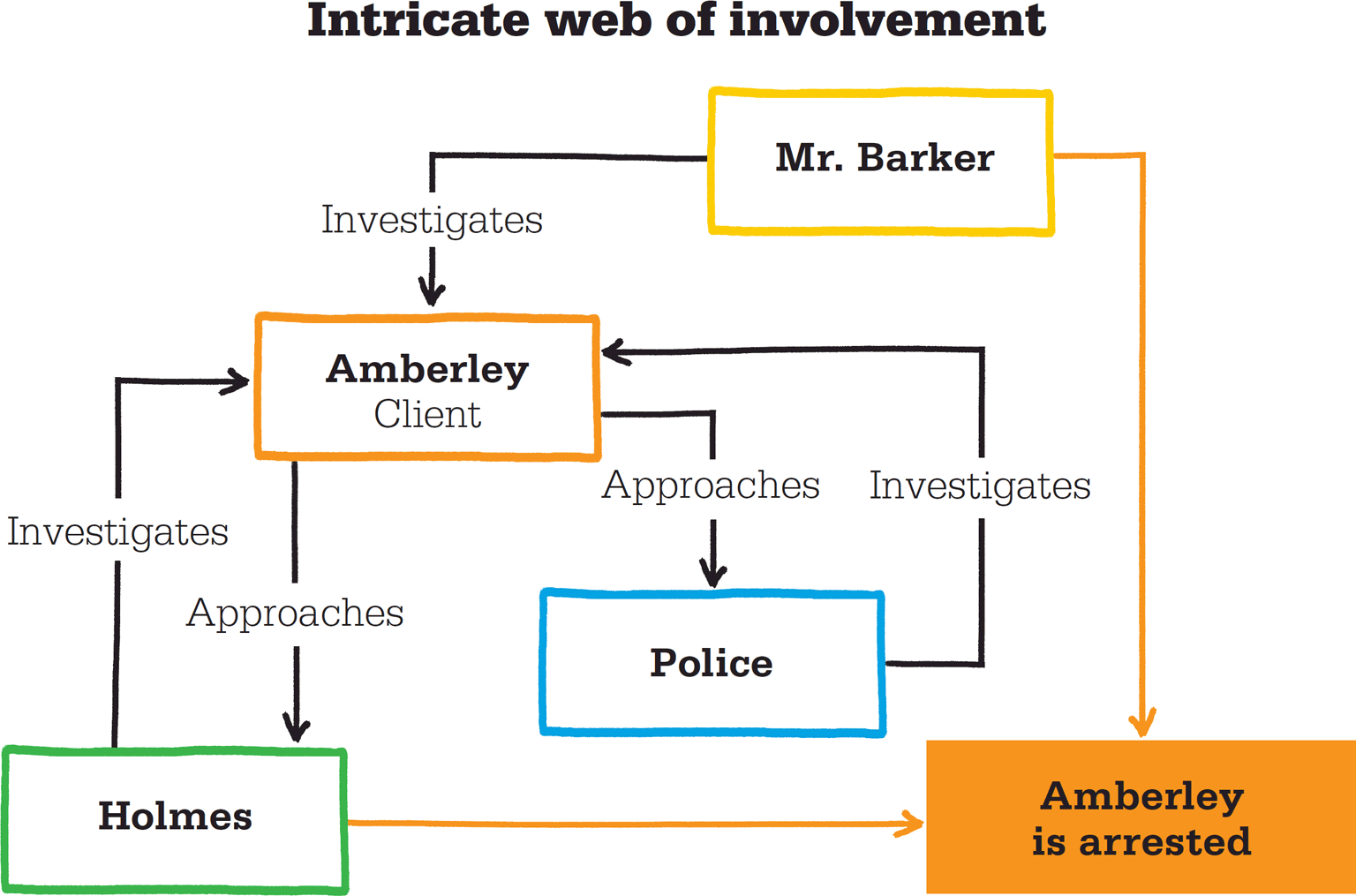
IN CONTEXT
Short story
US: December 1926
UK: January 1927
The Case Book of Sherlock Holmes, 1927
Josiah Amberley Retired colorman (manufacturer of art materials).
Mrs. Amberley Josiah Amberley’s young wife.
Dr. Ray Ernest Chess-playing companion of Josiah.
Mr. Barker Private investigator and Holmes’s professional rival.
Mr. J. C. Elman Vicar of Little Purlington.
Inspector MacKinnon Smart young police officer.
After a recent first encounter with a new client, referred to him by Scotland Yard, Holmes is in a melancholy mood. The client, Josiah Amberley, is the “retired colourman” of the story’s title, a former manufacturer of art materials and now a pathetic, broken creature, aged beyond his years, his face lined, his posture stooped, and his appearance unkempt.
Amberley claims that his young wife has been having an affair with his chess partner, Dr. Ray Ernest, and now the pair have gone missing with his life savings. Watson is enlisted as Holmes’s proxy and sent to Amberley’s Lewisham home to investigate. This is an unusual, though not unique, procedure for Holmes, who tends to distrust and double-check Watson’s investigative work, as in The Hound of the Baskervilles. The report Watson writes shows him at his most creative, giving Holmes ample opportunity to call out his tendency to embroider and embellish the facts.

Holmes takes charge
Crucially, Watson observes that Amberley is painting a door and passageway in his house with a strong-smelling green paint. Watson also notices a tall, dark, mustached man who follows him when he leaves Amberley’s house. This is enough to engage Holmes’s suspicions. Holmes despatches Watson and Amberley on a wild-goose chase to Essex using a false telegram purporting to come from a vicar named Elman. With them out of the way, he establishes that Amberley’s alibi for the night of his wife’s disappearance (a theater trip) is false. Holmes then breaks into Amberley’s house and discovers, behind the freshly painted door, a sealed chamber with a telltale gas inlet pipe—a perfect murder room. Amberley lured his wife and her suspected lover into the chamber and trapped them there, flooding the room with poisonous gas.
Joining forces
The mysterious dark man spotted by Watson turns out to be Holmes’s rival, the private investigator Mr. Barker, who has been hired by Dr. Ernest’s family. Unusually, the two join forces, handing over the murderer to Inspector MacKinnon of Scotland Yard. Holmes instructs the inspector to look for conclusive evidence of the murder around the house, including in a disused well, and the bodies are duly discovered. The inspector shows his genuine respect for Holmes when he states, with admirable understatement, that “it’s as workmanlike a job as I can remember.”
Amberley’s approach to the authorities, and latterly Holmes, was “Pure swank”—the murderer had complete confidence that he would not be outwitted by either the police or the renowned detective.
"Burglary has always been an alternative profession had I cared to adopt it…"
Sherlock Holmes
Motives and madness
Holmes observes that Amberley’s mind was deranged by jealousy, and it is probably no coincidence that Amberley used green paint (the color associated with jealousy) to mask the smell of gas emanating from the murder chamber. Holmes sees the extreme cruelty of the murder as a sure sign of madness, and suggests that Amberley is more likely to end up in the Broadmoor asylum than on the gallows.
This story is lighter and more playful in tone than the melancholy of the opening would have the reader believe. Assigning Watson an investigative role inevitably leads to some witty banter between the two friends, as they contrast their abilities. Holmes is depicted at his enterprising best as a hyper-observant cat burglar, and the police are, as usual, left flat-footed. Although Holmes has solved the crime, he does not seek public recognition, and seemingly enjoys reading accounts of the case that credit the police with solving the mystery. However, he still suggests, in his wry way, that Watson make a record of the events, saying, “Some day the true story may be told.”
BROADMOOR

As Holmes suggests, Amberley may plead “not guilty by reason of insanity” and be sentenced to a life of incarceration rather than hanging. During the 19th century, there was a growing awareness that mentally ill criminals required different treatment from common felons, and the Criminal Lunatics Act of 1800 allowed them to be detained indefinitely.
The Broadmoor Criminal Lunatic Asylum, in Crowthorne, Berkshire, opened its doors in 1863 and was the first custom-built institution for such cases. It was self-sufficient, with its own farmland and workshops operated by inmates. Men and women were segregated and underwent a routine of work, exercise, and rest. The hospital was managed by a medical superintendent and two doctors, and assisted by a staff of 100 non-medical attendants.
Today, Broadmoor still has “special hospital” status, but no longer treats women. Men who are a high risk to themselves, or to others, are treated at this high-security facility.
